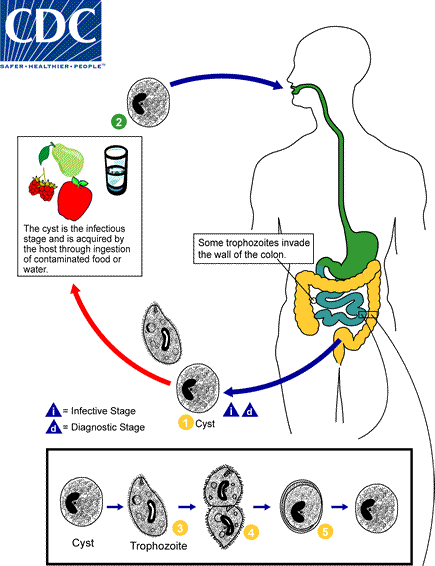Biology
Causal Agent:
Balantidium coli, a large ciliated protozoan parasite.
Life Cycle:

Cysts are the parasite stage responsible for transmission of balantidiasis ![]() . The host most often acquires the cyst through ingestion of contaminated food or water
. The host most often acquires the cyst through ingestion of contaminated food or water ![]() . Following ingestion, excystation occurs in the small intestine, and the trophozoites colonize the large intestine
. Following ingestion, excystation occurs in the small intestine, and the trophozoites colonize the large intestine ![]() . The trophozoites reside in the lumen of the large intestine of humans and animals, where they replicate by binary fission, during which conjugation may occur
. The trophozoites reside in the lumen of the large intestine of humans and animals, where they replicate by binary fission, during which conjugation may occur ![]() . Trophozoites undergo encystation to produce infective cysts
. Trophozoites undergo encystation to produce infective cysts ![]() . Some trophozoites invade the wall of the colon and multiply. Some return to the lumen and disintegrate. Mature cysts are passed with feces
. Some trophozoites invade the wall of the colon and multiply. Some return to the lumen and disintegrate. Mature cysts are passed with feces ![]() .
.
Life cycle image and information courtesy of DPDx.
- Page last reviewed: March 17, 2015
- Page last updated: March 17, 2015
- Content source:


 ShareCompartir
ShareCompartir